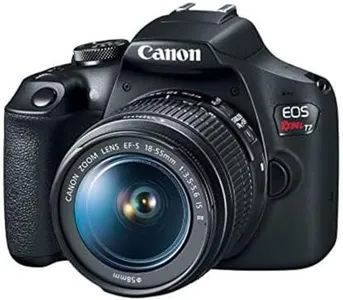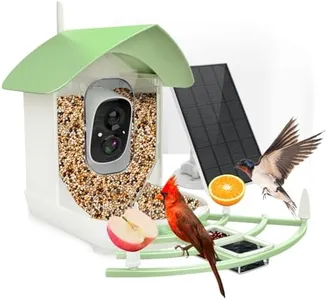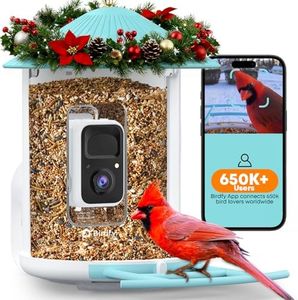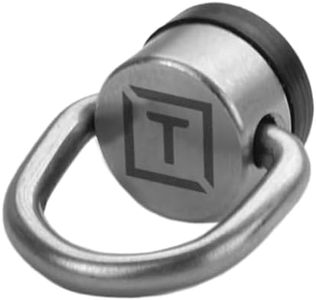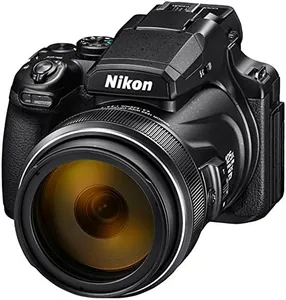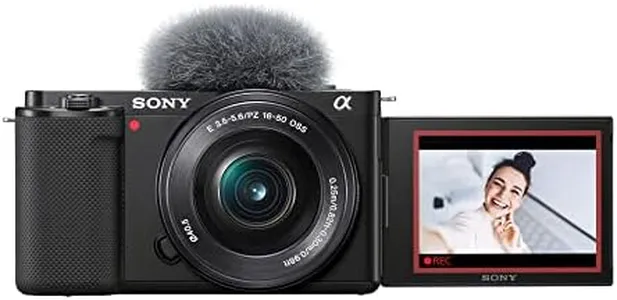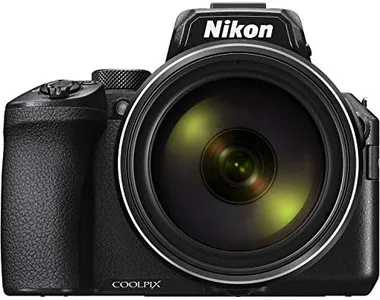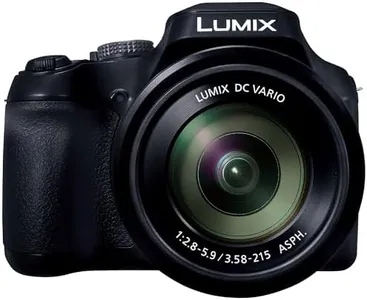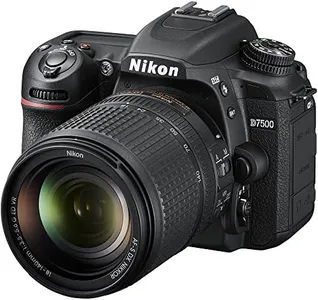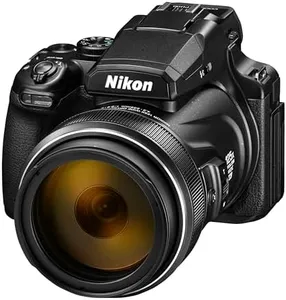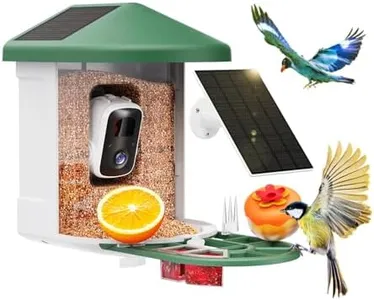10 Best Birding Cameras 2025 in the United States
Our technology thoroughly searches through the online shopping world, reviewing hundreds of sites. We then process and analyze this information, updating in real-time to bring you the latest top-rated products. This way, you always get the best and most current options available.

Our Top Picks
Winner
Canon EOS Rebel T7 DSLR Camera|2 Lens Kit with EF18-55mm + EF 75-300mm Lens, Black
Most important from
8246 reviews
The Canon EOS Rebel T7 DSLR Camera comes with a two-lens kit (EF18-55mm and EF 75-300mm) that offers a decent zoom capability for birding. The 24.1 Megapixel CMOS (APS-C) sensor allows for high-resolution images, which is great for capturing the fine details of birds.
The autofocus system, with 9 points and AI Servo AF, is somewhat basic and may struggle with the fast and erratic movements of birds compared to more advanced systems. The continuous shooting speed at 3 frames per second (fps) is also quite modest and may not be sufficient for capturing action shots of birds in flight. The camera is relatively lightweight at 3 pounds, making it portable for birding expeditions. Yet, it lacks weather sealing, which could be a concern in unpredictable outdoor environments.
The Canon EOS Rebel T7 is a good entry-level option for birders, particularly those who are just starting and want a combination of decent image quality and affordability. However, for more serious birders, the limitations in autofocus and burst mode may be significant drawbacks.
Most important from
8246 reviews
Canon EOS Rebel T7 DSLR Camera with 18-55mm Lens | Built-in Wi-Fi | 24.1 MP CMOS Sensor | DIGIC 4+ Image Processor and Full HD Videos
Most important from
8246 reviews
The Canon EOS Rebel T7 is a solid entry-level DSLR that offers good image quality with its 24.1 MP APS-C CMOS sensor, which is large enough to capture sharp, detailed photos—important for birding. Its 18-55mm kit lens has a modest zoom range, roughly equivalent to 29-88mm on a full-frame camera, which might feel a bit short for capturing distant birds without swapping to a longer telephoto lens. Autofocus uses 9 points and includes AI Servo mode for tracking moving subjects, but this system is somewhat basic compared to more advanced cameras, so fast or erratic bird movements might challenge it. Burst shooting is limited to about 3 frames per second, which is lower than many cameras designed for wildlife photography where higher speeds help capture quick action.
The camera weighs about 1 pound, making it fairly portable for day trips, though it's bulkier than mirrorless alternatives. It lacks weather sealing, so caution is needed in wet or dusty conditions common in birding environments. The built-in image stabilization on the lens helps reduce blur from hand shake, a nice plus in the field. Other features like built-in Wi-Fi allow easy sharing of photos, and full HD video is supported if you want to record birds in motion.
While the Rebel T7 is user-friendly and produces great images for general photography, birding enthusiasts aiming for distant subjects and fast action might find its zoom and autofocus performance limiting without investing in additional lenses.
Most important from
8246 reviews
Bird Feeder with Camera,Smart AI Birds Breed Recognition,Birds Motion Detection with Real-Time Notice,Auto Capture Bird Watching WiFi Camera,Solar-Powered Outdoor Charging Bird House,Ideal Gifts,Green
The Fazoxo Smart Bird Feeder with Camera is designed for bird lovers who want an easy, interactive way to observe backyard birds up close. Its standout feature is an advanced AI system that can identify over 10,000 bird species, making it great for those interested in learning about different birds. The 2K HD camera with night vision allows clear viewing and listening to birds anytime, and instant phone notifications keep you updated on bird visits in real-time. The built-in microphone and two-way call feature also add some fun interaction, like scaring away squirrels.
Its 2K resolution provides decent image clarity for casual birding. Continuous monitoring is possible through the live phone view. Weighing about 4.3 pounds and featuring multiple mounting options, it’s portable enough for various outdoor setups. The solar-powered battery recharge and weather-resistant design make it reliable for long-term outdoor use without frequent maintenance.
This feeder-camera combo is especially suited for casual birdwatchers or families, including elderly users, who want a simple, low-effort way to enjoy birds without disturbing them. Serious bird photographers looking for advanced zoom, fast autofocus, or rapid burst shots might find its camera features somewhat basic. The AI identification and convenient app control are strong points that set it apart from traditional bird feeders, offering an engaging birding experience for most users.
Buying Guide for the Best Birding Cameras
Choosing the right birding camera can significantly enhance your bird-watching experience. Birding cameras are designed to capture detailed images of birds, often from a distance. When selecting a birding camera, it's important to consider several key specifications that will impact the quality of your photos and your overall experience. Understanding these specs will help you make an informed decision based on your specific needs and preferences.FAQ
Most Popular Categories Right Now



